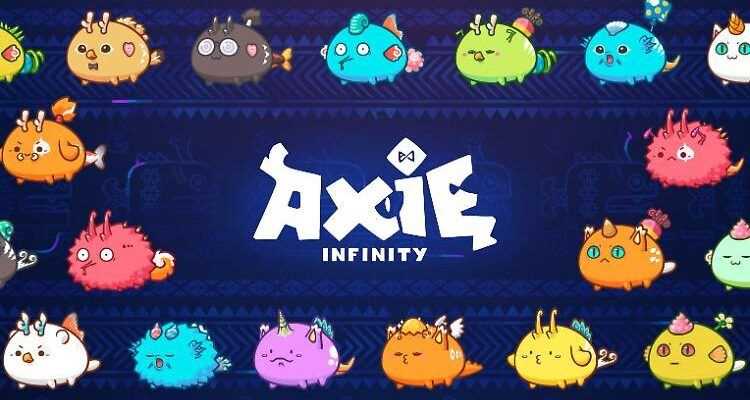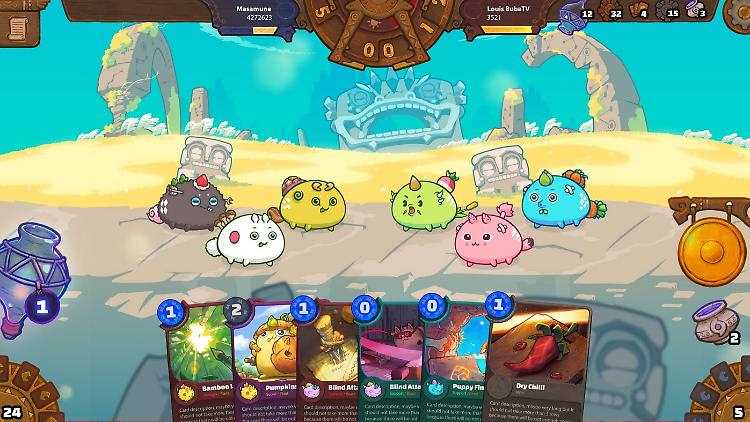Earn money with gambling? You don’t have to be an e-athlete to do this. With video games in the style of Pokémon, cryptocurrency can now be raked in. The blockchain games have many disadvantages, however.
In the 90s it was the Tamagotchi, in the early 2000s it was the Pokémon. Playing the nanny for little monsters is a trend that is now flourishing again in web-based GameFi games because they can be used to earn cryptocurrency.
Earning money with video games (GameFi) follows the “play-to-earn” (P2E) principle. While the time-consuming care of Tamagotchi and Co. had no tangible equivalent, P2E titles offer players the opportunity to earn money with progress in the game. In the most popular cases, the titles are designed for little monsters or fantasy characters that need to be bred or trained. “Axie Infinity” is the market leader. Anyone who buys cryptocurrency here can multiply it with gambling.
Getting started is not exactly cheap. An eWallet is required to store crypto currencies. With Ethereum, three little monsters – the so-called Axies – are bought at the beginning. They look like a mix of Axylotl and Pokémon and already have a hefty price tag of $ 300 each. What makes the Axies unique is the blockchain-based Non-Fungible Token (NFT), a certificate for virtual ownership that retains its value and cannot be forged. By developing his Axies, the player can then increase their value.
In the game, the monsters compete in the arena with computer-controlled opponents or other players in order to earn the in-game cryptocurrencies “Smooth Love Potion” (SLP) and AXS. They are of course only worth a fraction of Ethereum, but can be converted back into the original currency or real money. First and foremost, however, the currency is needed to improve the Axies, to make them more competitive and thus more valuable. You can then trade with the little monsters yourself. In order to compete in the arena, however, you always need at least three of them.
Success in the game also depends on a good dose of luck. Basically, cards are played in “Axie Infinity”, with which the Axies carry out certain actions. Attack, block, heal – it works on the principle of stone, scissors, paper. Each round must be anticipated which cards the opponent could play. The deck of cards is made up of the Axies’ abilities, but the selection is a coincidence.
Boom in Southeast Asia
If starting at $ 900 is too expensive for you, you can also apply for a virtual scholarship from Axie managers, but then primarily play the babysitter for their Axies. Of course you also earn a small share of SLP with the Axies, but only the owner benefits from the increasing value of the little animals. Of course, you can also become an Axie Manager yourself.
The entry threshold, which has been lowered in this way, has triggered a real boom in many developing countries. You can earn several hundred dollars a month with the Axies, in some cases even several thousand – if you do it like a full-time job. But that is significantly more than the average annual income in countries like the Philippines, Indonesia or Venezuela. Most of the players are distributed in these countries, but the game is also becoming more popular in the USA. A year ago there were around 450,000 players worldwide every month, now there are more than 2.2 million. The growing number of players then competes in guilds or solo for additional prize money, which is awarded monthly to the most successful Axie gamers.
“Axie Infinity” is not particularly versatile, exciting or entertaining. After a certain time, the game becomes a pure click grind in order to generate as much SLP or AXS as possible in the shortest possible time. Graphically and in terms of gameplay, “Axie Infinity” does not exceed the level of Game Boy games.
Parallels to pyramid schemes
The scholarships and the price fluctuations at the Axies are also reminiscent of a pyramid scheme. This only works as long as new players or investors are pouring money into the market. If this does not happen, profits shrink and interest declines. The developers from the Vietnamese startup Sky Mavis also earn 4.25 percent with every transaction in the game.
Even if co-founder Aleksander Leonard Larsen promises limitless growth and believes in up to two billion players, many beginners find it difficult to access. Around 50 percent of Axie players have never had anything to do with cryptocurrencies before. “It’s really hard to play Axie right now,” Larsen said at the Token 2049 future fair in London. He compared the process of entering the game to swimming to an island. “Lots of people drown just trying”.
GameFi is no longer limited to Pokémon-like games. “Upland” is a kind of Monopoly that has virtually recreated the urban areas of Manhattan, San Francisco and Fresno and created an NFT-based real estate market. In “Decentraland” you can buy and cultivate your own virtual piece of land and increase its value in a world governed by the community. In “Farmers World”, the virtual harvest also yields a yield in crypto.
The GameFi field is rapidly evolving, creating new types of assets that can be used as an investment and trading tool. The market will continue to grow accordingly and could reach the brand as early as next year $ 200 billion exceed. It remains to be seen whether the little crypto monsters will still be trendy.


